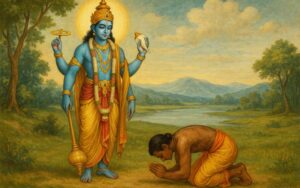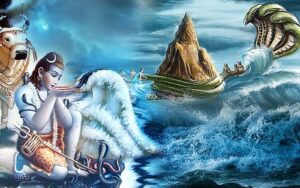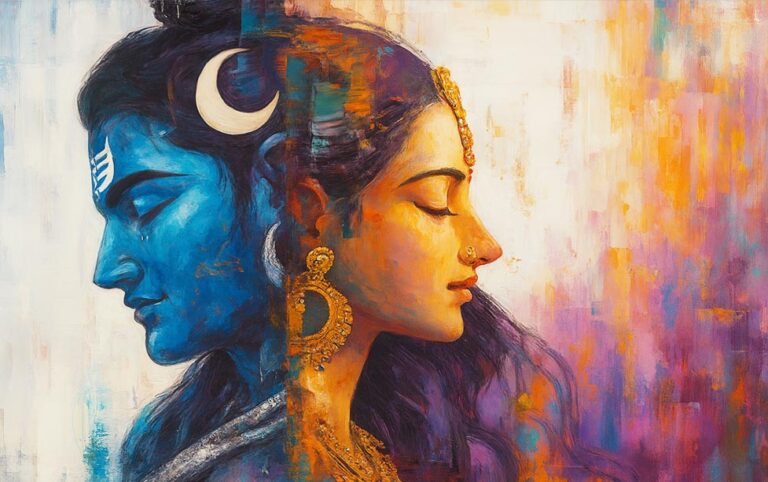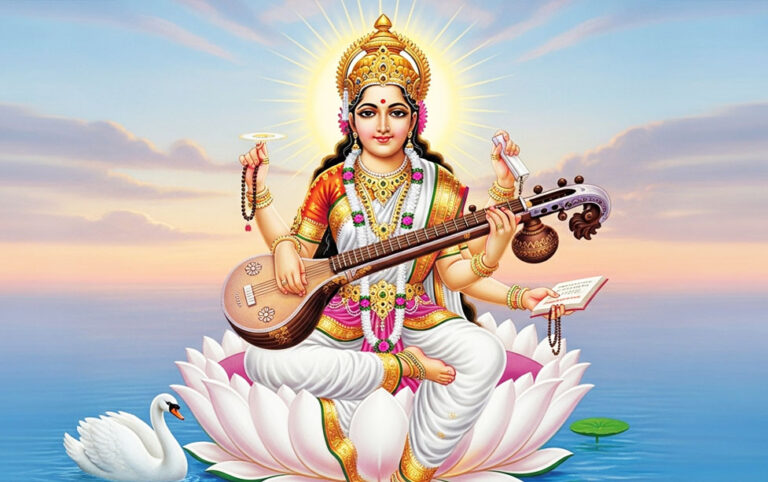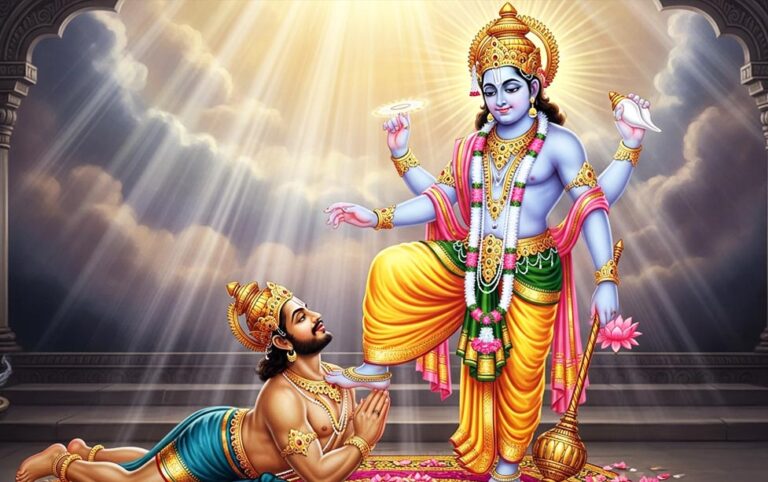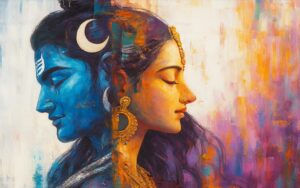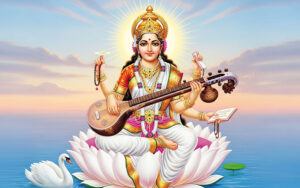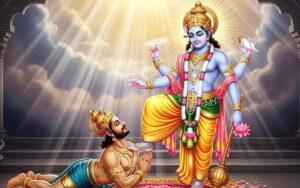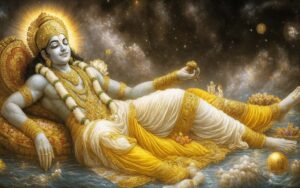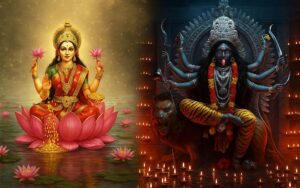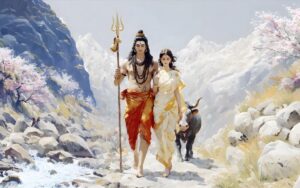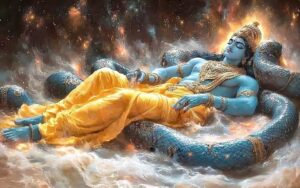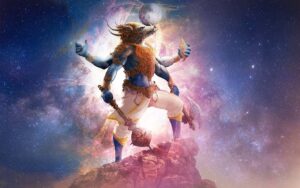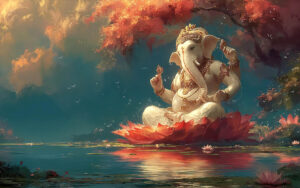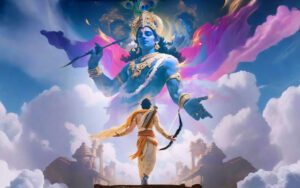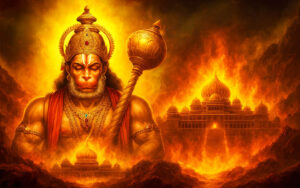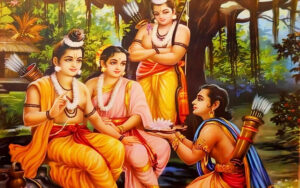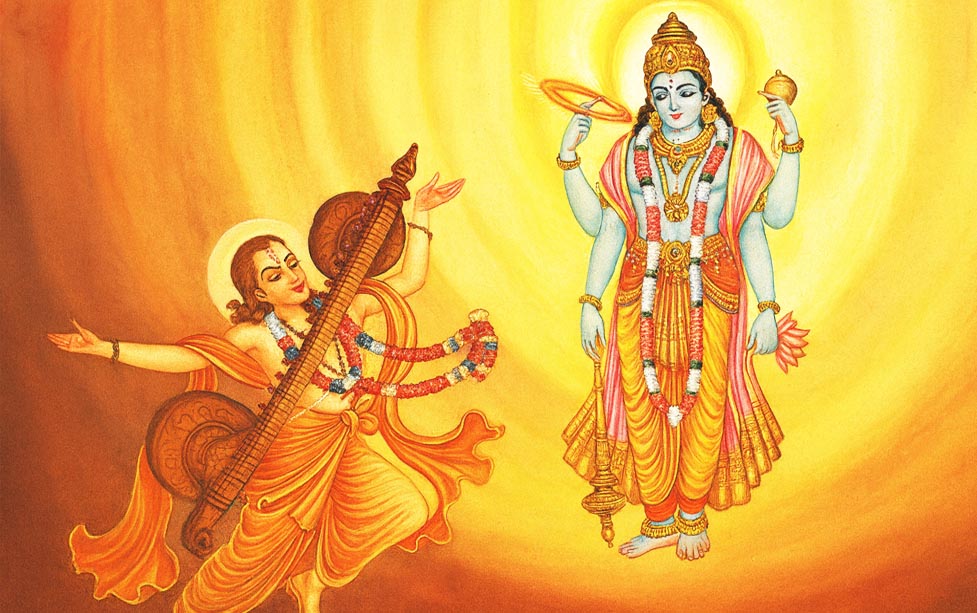
No time for reading the story? Give it a listen on Spotify.

This story is about how Lord Vishnu shows Narada Muni the power of maya by making him live an entire lifetime—full of love, family, and loss—in just a single moment.
Characters in the story:
Lord Vishnu: Lord Vishnu is one of the three major deities in Hinduism, known as the preserver of the universe and the protector of dharma (righteousness). He is often depicted with four arms holding a conch shell, a discus, a mace, and a lotus flower.
![]()
Narad Muni: Narad Muni is a divine sage and a devotee of Lord Vishnu. He is known for his wisdom, musical talents, and his role as a messenger and mediator between the gods and humans.
In Sanatana philosophy, Maya refers to the divine illusion that shapes our perception of reality. The Vishnu Purana and Narada Charitra contain a famous story where Lord Vishnu teaches Narada the meaning of maya—not through definitions, but through a life-changing experience.
Narada’s Journey into Illusion
Sage Narada, a celestial devotee and messenger of the gods, once approached Lord Vishnu with a deep spiritual question:
“O Lord, what is maya? How does it bind even the wise?”
Vishnu smiled and replied, “Narada, to understand maya, you must experience it. But first, can you fetch me some water from a nearby village?”
Narada agreed and set off with a pitcher. When he reached the village, he stopped at a small house to ask for some water. The door opened, and a beautiful young woman greeted him with a warm smile. Their first meeting was brief, but something about her presence lingered in Narada’s mind.
Over the next few days, their paths crossed again. Small conversations turned into long talks, and a gentle friendship began to grow. That friendship deepened into affection, and before long, Narada found himself in love. In time, he asked for her hand in marriage, and the two began a new life together in the village.
Years passed. Narada became a respected villager, raising children and working the land. He knew the joy of festivals, the pride of fatherhood, and the comfort of home. Decades rolled by.
One day, disaster struck — a flood swept through the village. The raging waters took his crops, his house, his children, and finally his wife. Narada fought desperately to save them, but failed. Exhausted and grief-stricken, he collapsed by the riverbank and cried out:
“Lord Vishnu! Save me!”
At once, Vishnu appeared and asked, “Narada, where is my water?”
Narada looked down. The pitcher was still in his hand, water untouched. The sun still shone as it had when he left. The decades of marriage, children, and loss had occurred only in an instant—all created by Vishnu’s yogamaya.
The Maya Angle – Understanding the Illusion
This story captures the essence of maya as described in Hindu philosophy — the mysterious power that shapes how we perceive and experience reality.
Time Distortion: For Narada, what seemed like decades of life unfolded, yet in truth only a moment had passed. Maya can stretch or compress our sense of time, making the unreal feel enduring.
Attachment and Identity: Narada’s love, family bonds, and grief felt completely genuine, binding his heart and mind to that world. Through maya, temporary relationships can take on the weight of absolute reality.
Perception as Reality: Every event Narada lived through existed only within consciousness. Though lacking permanent substance, these experiences were, to him, as real as any physical happening.
In the Puranic view, yogamaya is not mere trickery or falsehood — it is the Lord’s divine creative power, able to manifest entire lifetimes within the mind. It reveals that what we call “reality” is often nothing more than the mind’s agreement with the illusion presented before it.
Even sages and enlightened seekers can become bound by maya when they identify with temporary experiences.
True freedom comes only from anchoring the mind in the eternal truth, beyond the illusions of time, identity, and attachment.


